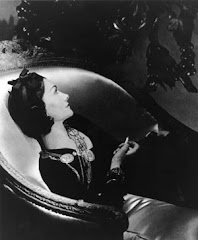
Ripped off from Norm, who spotted it first, this very telling insight from David Baddiel, about Jane Austen, summing up my disgust at the recent biopic (not to mention the increasingly Mills and Boonish quality of film adaptations of her work.
I first read Austen as a teenager, given Nothanger Abbey as an O level set text. I did not much enjoy it, unable to appreciate at such a young age, what Baddiel so effectively describes. I am not, like Norm, a Janeite, but Baddiel's assessment of her as the firs modernist, will take me back there, right now:
However, the great writer who has really been portrayed this way most frequently in recent times is one who hasn't yet been visited by the jaunty Gallifrean: Jane Austen. Both in the film Becoming Jane and the TV movie Miss Austen Regrets, Austen was depicted as a waspish cynical tomboy, clever with words if not so clever with men: a sort of Regency Sue Perkins. In the TV movie, there was a greater stab at complexity, as the character grew bitter with age - an Elizabeth Bennett who never nabs Mr Darcy - but in both there was, I would hazard, an incipient underlying sexism, based on the notion that Austen's work was underpinned by her own failures in love.
Because here's the thing about Jane Austen. She was a very great genius. She is possibly the greatest genius in the history of English literature, arguably greater than Shakespeare. And her achievement is not that much to do with love, although that was her subject matter. It's to do with technique. Before her there are three strands in English fiction: the somewhat mental, directly-reader-addressing semi-oral romps of Nashe and Sterne and Fielding; the sensationalist Gothic work of Horace Walpole and Ann Radcliffe; and the romances of Eliza Haywood and Fanny Burney.
However great these writers are, none could be read now and considered modern. When Austen gets into her stride, which she does very quickly with Sense and Sensibility, suddenly, you have all the key modern realist devices: ironic narration; controlled point of view; structural unity; transparency of focus; ensemble characterisation; fixed arenas of time and place; and, most importantly, the giving-up of the fantastical in favour of a notion that art should represent life as it is actually lived in all its wonderful ordinariness. She is the first person, as John Updike put it: “to give the mundane its beautiful due”, and her work leads to Updike as much as it does to George Eliot.
I have no idea how a mainly home-educated rector's daughter came by all that, but I know that imagining her as a kind of acerbic spinster flattens out this genius. It becomes all about the subject matter and not at all about the huge creative advance her work represents.

3 comments:
I can quite understand Baddiel's view of Jane Austen. You only have to look at the design (including clothing) of this era to see how modern Georgian culture was. This is by far one of the most exciting and forward thinking eras of British history and George IV is still responsible for supporting the arts and more architectural projects than any other British monarch before or since. As a woman of her time Jane Austen was indeed a modernist.
David Baddiel has zoomed up in my estimation - how well he puts it too! Love it!
While not having read Baddiel, I beg to differ a bit, seeing Austen as a Classically influenced author (which is always modern). Her Mansfield Park seems highly influenced by the some of the themes found in Homer's Oddysey, such as what happens when the master is away from home and cultivation of the land, id est landscaping.
Post a Comment